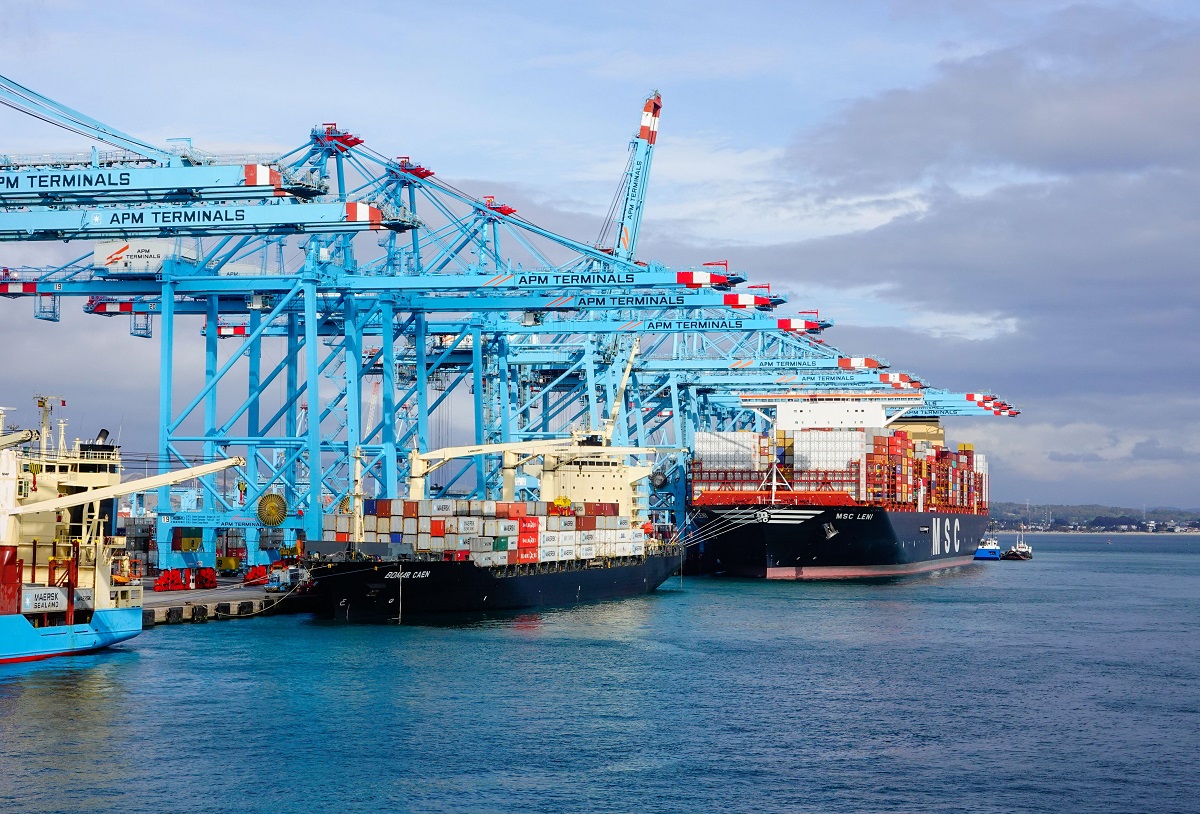Why Ports Are at Risk of Cyberattacks

Evidence indicates that the world’s ports are returning to pre-pandemic levels. During the first 11 months of 2021, the value of US international freight increased by more than 22% (PDF) compared with the same 11 months in 2020. More freight means more ships docking at port. And not only are more ships docking, but their dwell times are increasing as well. The average container vessel dwell time at the top 25 US container ports was estimated at 28.1 hours in 2020. In the first half of 2021, average container vessel dwell times increased to 31.5 hours.
While this increase in activity is undoubtedly welcome, more docked ships bring a new challenge. The longer a ship is docked, the more vulnerable the port is to a cyberattack.
The Cyber-Risk to Ships
The maritime industry is especially vulnerable to cyber incidents. There are multiple stakeholders involved in the operation and chartering of a ship, which often results in a lack of accountability for the IT and OT system infrastructure and the ship’s networks. The systems may rely on outdated operating systems that are no longer supported and cannot be patched or run antivirus checks.
Going forward, this threat is expected to increase. Critical ship infrastructure related to navigation, power, and cargo management has become increasingly digitized and reliant on the Internet to perform a broad range of legitimate activities. The growing use of the Industrial Internet of Things (IIoT) will increase the ships’ attack surface.
Common ship-based cyber vulnerabilities include the following:
- Obsolete and unsupported operating systems
- Unpatched system software
- Outdated or missing antivirus software and protection from malware
- Unsecured shipboard computer networks
- Critical infrastructure continuously connected with the shore side
- Inadequate access controls for third parties including contractors and service providers
- Inadequately trained and/or skilled staff on cyber-risks
Troubled Waters?
Maritime cybersecurity has become a significant issue affecting ports around the world. According to the firm Naval Dome, cyberattacks on maritime transport increased by 400% in 2020. Cybersecurity risks are especially problematic to ports around the globe since docked ships regularly interact digitally with shore-based operations and service providers. This digital interaction includes the regular sending of shipping documents via email or uploading documents via online portals or other communications with marine terminals, stevedores, and port authorities.
For example, many port authorities require a Port State Control (PSC) survey to be completed by foreign ships docking in their ports. Among other activities, this survey verifies several ship certificates and approximately 40 different documents required by international maritime authorities.
Some past examples of port-based cyber breaches:
Port of Rotterdam: In June 2017, the port of Rotterdam was hit with a ransomware attack that paralyzed the activities of two container terminals operated by APMT, a subsidiary of the Møller-Maersk group. Note that the port of Rotterdam had completely automated its operations as part of a Smart Port strategy.
Port of Shahid Rajaee: In May 2020, the port of Shahid Rajaee, Iran, suffered a cyberattack that almost totally shut down its operations. The Washington Post reported that the “computers that regulate the flow of vessels, trucks and goods all crashed at once, creating massive backups on waterways and roads leading to the facility.” This cyberattack was presumed to be Israel’s response to an attack on its water network.
Port of Kennewick: In November 2020, the port of Kennewick, Wash., was hit with ransomware that completely locked access to its servers. Even with the small size of this port, it took nearly a week for port authorities to access their data. Malware injected via a phishing email is thought to be the cause of this attack.
Knowing that they are vulnerable to cyber breaches does not help alleviate the challenge to ports that have no choice but to accept documents originating from these ships. If ports block these documents, the ships cannot dock, and this ultimately causes delays in global logistics and the supply chain.
The Danger
Ports have no choice but to accept the ships’ documents. Refusal to accept these documents means loss of port revenue and blockages in the smooth flow of the supply chain. Document sending must proceed. But file-borne threats pose a significant challenge for ports. Malware is designed to access or damage a computer without the owner’s knowledge. Hackers embed malicious code into seemingly innocent files. When those files are opened, the malware automatically executes and allows the hackers to gain access to valuable data or cause damage to the maritime industry.
Many of these threats first enter the ship through email phishing schemes — attempts to fool employees and individuals into opening and clicking on malicious links or attachments in emails or uploading malicious documents to website portals. These “hacks” often exploit vulnerabilities in the ships’ networks, using the vessel to gain access to the ship’s partners, including the port.
Read More HERE
